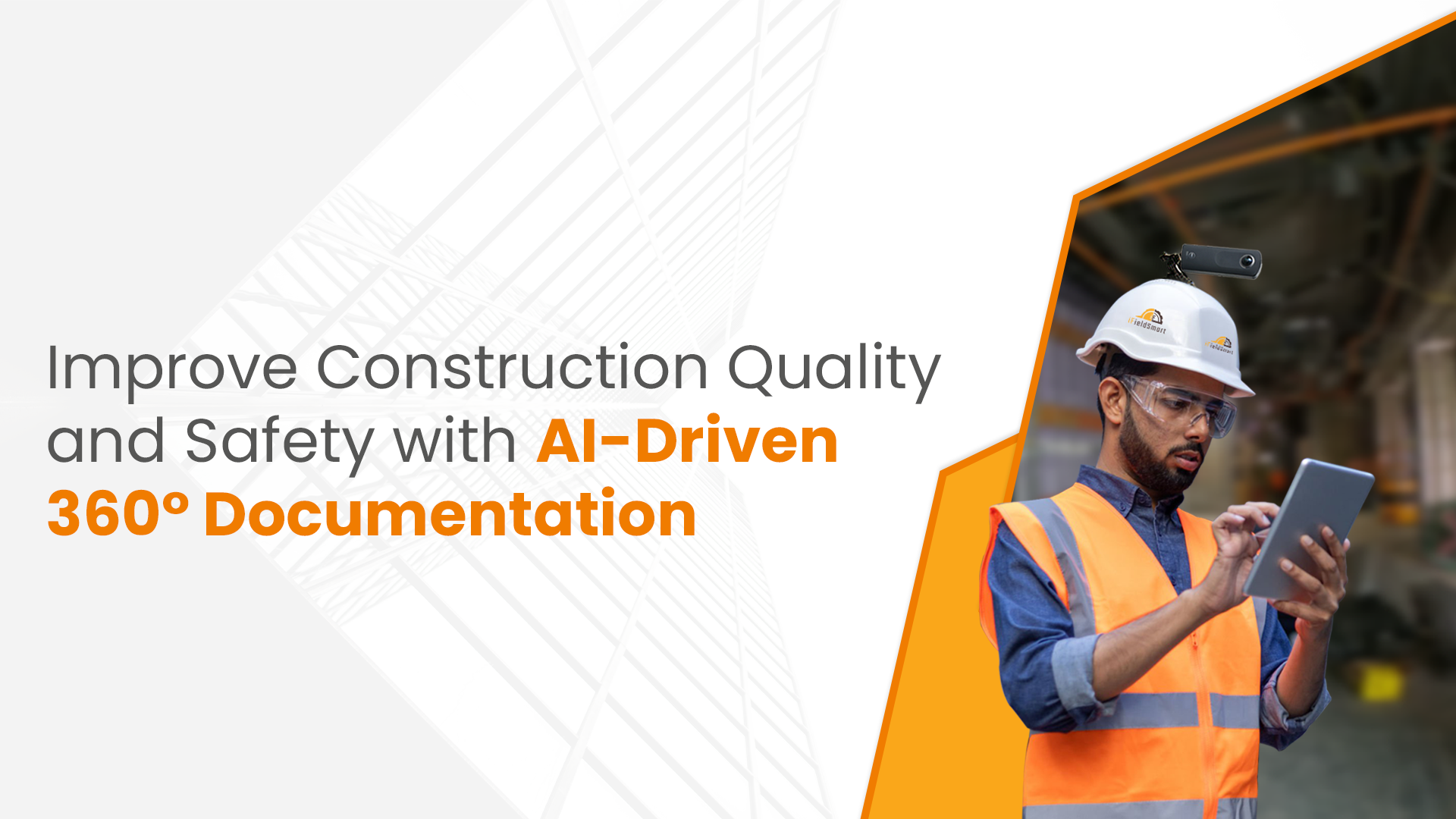Introduction.
The construction sector is driven by pressure due to multiple factors of time, costs, safety, and quality. The use of AI-led 3600 documentation is paramount in how various teams function. Obsolete manually created reports and photo documentation are being displaced by advanced and smart tools that provide visibility for various stakeholders in real-time. It also supports general contractors and subcontractors in making faster and more informed decisions.
The following article demonstrates how AI-led 3600 documentation apps like Lens360 are changing quality control within construction and reassuring project safety by making progress tracking seamless and reducing disputes.
What are the obstacles to maintaining site quality and safety?
Managing safety and construction quality on a live job site through legacy techniques requires a physical presence, tracking, and coordination between various participants. Manual methods of field inspections, creating punch lists, delayed updates, and errors due to human intervention make it problematic to detect issues faster.
Lags in quality can lead to rework, which causes a significant amount of costs, which amount to 30%. Safety problems can lead to greater implications, including a project closedown due to serious injuries and project litigation. The construction industry requires an advanced and preemptive solution that provides real-time visualization clarity, eliminates miscommunication, and delivers records with defensible proof.
How can AI-led 3600 documentation help stakeholders?
AI-backed 3600 documentation Software like Lens360 delivers data-stamped and immersive visualization of the job site through well-visualized walkthroughs. Site replicas in a digital format are remotely accessible and reinforced with AI tagging and enriched into project management apps like Autodesk Construction Cloud and Procore.
This methodology is transformational as it has the capability for broad-spectrum visualization with smart organization and data-driven insights. All this is done while requiring minimal expertise to learn and deploy.
What are the core benefits for boots on the site—construction teams?
1. QA/QC visualization for optimized quality control.
Using 3600 site documentation, multiple teams can perform quality checks in a virtual setting—through accelerated processes and greater detail. Rather than depending on silo images or memorization, QA personnel and inspectors can achieve in-depth walkthroughs from remote devices, annotate problems, and generate punch lists directly on photos.
AI tools can remove anomalies, including missing elements, installation inaccuracies, or out-of-sequence activities. These decisions or insights have a profound effect on enhancing the consistency of inspections across projects that are layered on multiple phases.
2. Enable preemptive safety tracking.
Job site security is no longer related to just the compliance aspect; it is more about preventing site issues. AI-led 3600 captures or documentation supports safety personnel to flag risks, which include unsafe edges, blocked project routes, and disoriented material storage.
Reviewing job sites in a virtual setting on a daily basis, supervising personnel can identify and resolve problems that include violations of space or temporary issues without being present on-site. This eliminates site travel time and enhances the coverage and frequency of site inspections.
3. Expedite problem resolution and reduce costly rework.
AI-led software can identify and resolve design issues, incomplete site installation, and scope conflicts before they manifest into costly issues. Visuals that are linked to tasks, RFIs, and observations support GCs and subcontractors coordinating with higher effectiveness and efficiency. A conflict related to plumbing interfering with HVAC ducts or electrical conduits is marked visually and resolved in a collaborative setting before the walls are concealed.
Identifying and marking 50% of the problems in an early phase helps teams lower rework and prevent schedule overages and cost overruns that follow these factors.
4. Unleash greater accountability and legal security for large-scale projects.
One of the most striking features of AI-driven 3600 documentation concerns legal assurance. All the visual records convert into secure and time-stamped visual data trails on what was done and by whom.
This proof is invaluable in resolving disputes related to payments, defending claims, and closing the gaps between disciplines. If an ambiguity is identified months later, teams can go back to walkthroughs to verify if the issue existed during the handover process.
5. Reap streamlined software integration and field-driven usability.
Advanced and data-driven platforms like Lens360 do not infuse complexities into field operations; they eliminate them. Field personnel and subcontractors can achieve accurate and comprehensive 3600 captures within minutes with minimal technical knowledge. These are tagged to floors, rooms, and various work phases and synchronized with software like Autodesk and Procore.
The ease of utilizing software like Lens360 in the field ensures visuals are updated and always available for participants, whether they are onsite or offsite.
How does it help subcontractors realize high-impact outcomes?
Contractors that are related to work which includes HVAC, drywall, electrical, and plumbing can leverage higher gains from using 3600 captures. These gains include:
- Expedited cycles in billing that are verified based on thorough and accurate evidence of finished work.
- Coordination improvements with multiple participants.
- Reduction in administrative overhead based on connected workflows within documentation.
- Greater job site security with reduced site visits and smaller teams.
Looking at smarter job sites—the road ahead.
As AI moves forward, its application within 3600 documentation will extend. Leveraging predictive analytics can preempt security risks and quality issues during historical audit studies. Machine learning (ML) ensures automated progress monitoring and compliance checking.
The modern jobsite will be more visual and intelligent, using immersive visualization, collaboration in real time, and higher insight automation to elevate safety and quality. If you are a subcontractor looking at securing your project scope, or a project manager considering rework reduction, or a safety officer requiring site oversight, AI-driven documentation enriched with 3600 captures is surely a transformative force.

